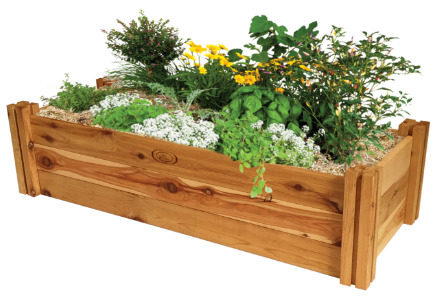The Ultimate Guide to Building Your Own Raised Garden Bed: Tips and Tricks for Beginners
Body
Creating a raised garden bed can be an enriching experience for both novice and seasoned gardeners. This structure not only enhances the aesthetic appeal of your garden but also provides numerous benefits, such as improved drainage, better soil quality, and easier access for planting and maintenance. In this guide, we will explore the essential aspects of building your own raised garden bed, ensuring you have all the information you need to get started.

Understanding the Benefits of a Raised Garden Bed
Why should you consider a raised garden bed? Here are some compelling reasons:
- Improved Soil Quality: You have complete control over the soil mix, allowing you to create the ideal growing environment for your plants.
- Better Drainage: Raised beds allow excess water to drain away, reducing the risk of root rot.
- Accessibility: They are easier to reach, making gardening more comfortable, especially for those with mobility issues.
- Pest Control: Elevated beds can deter certain pests, reducing the need for chemical interventions.
Choosing the Right Location for Your Raised Garden Bed
When selecting a location for your raised garden bed, consider the following factors:
- Sunlight: Most vegetables and flowers require at least 6-8 hours of sunlight daily.
- Accessibility: Ensure that the bed is easily reachable for planting, watering, and harvesting.
- Drainage: Avoid low spots where water tends to pool.
Materials for Building Your Raised Garden Bed
What materials should you use for constructing a raised garden bed? Here are some popular options:
- Wood: Untreated cedar or redwood is ideal due to its natural resistance to rot.
- Metal: Galvanized steel is durable and can add a modern touch to your garden. Check out
for quality options.
- Bricks or Stones: These materials provide a sturdy and attractive option but may require more effort to assemble.
Steps to Build Your Own Raised Garden Bed
Building a raised garden bed is a straightforward process. Here’s a simple step-by-step guide:
- Choose your location and mark the dimensions of your bed.
- Gather your materials and tools, including soil, compost, and plants.
- Construct the frame using your chosen materials, ensuring it is level and stable.
- Fill the bed with a mix of soil and compost, leaving some space at the top.
- Plant your seeds or seedlings according to their specific requirements.
In conclusion, a raised garden bed can transform your gardening experience, making it more enjoyable and productive. By following the tips and tricks outlined in this guide, you can create a thriving garden that not only beautifies your space but also provides fresh produce for your table. Happy gardening!









Comments